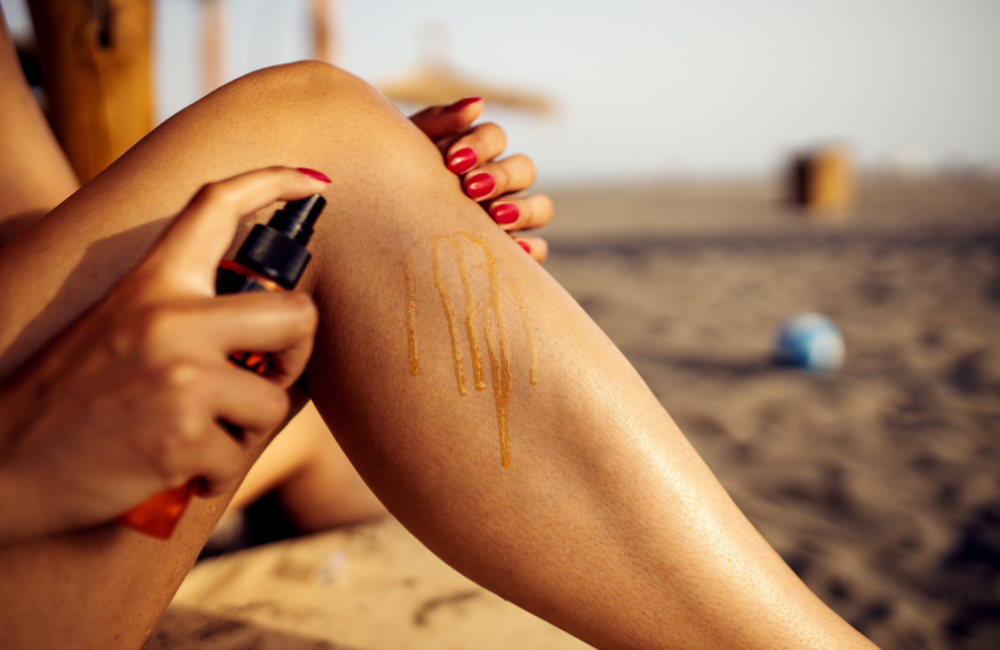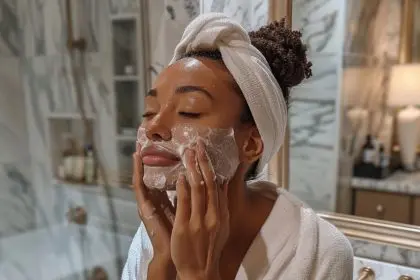The pursuit of golden skin has led millions to reach for bottles of tanning oil each summer, chasing that coveted sun-kissed appearance that social media has made synonymous with health and beauty. Yet behind the glossy marketing lies a troubling reality that dermatologists say consumers consistently overlook: these products may be doing far more harm than good.
Recent research reveals that tanning oils, designed to intensify the sun’s effects on skin, can dramatically increase exposure to harmful ultraviolet radiation while providing virtually no protection against its damaging consequences.
Understanding tanning oils
Tanning oils operate through a mechanism that fundamentally alters how skin interacts with sunlight. These products contain ingredients specifically chosen to reduce the skin’s natural refractive index, essentially creating a pathway for more UV rays to penetrate the skin’s surface layers.
Common formulations include olive oil, coconut oil, and sunflower oil, ingredients that sound natural and harmless but serve a potentially dangerous purpose. When applied to skin, these oils create what dermatologists describe as a magnification effect, concentrating UV rays and accelerating melanin production in ways that bypass the body’s natural protective responses.
Dermatologists explain that this acceleration comes at a significant cost. The products essentially trick the skin into absorbing more radiation than it would naturally encounter, with the result being faster tanning but cellular damage occurring at an equally accelerated rate.
Are tanning oils safe?
The consensus among dermatologists remains clear: tanning oils are not safe. The sun protection factor ratings found on most tanning oils tell a concerning story. While effective sunscreens typically offer SPF 30 or higher, tanning oils rarely exceed SPF 15, with many containing no measurable protection whatsoever.
Dermatologists emphasize that the minimal SPF ratings found in these products create a false sense of security. Consumers see an SPF number and assume they’re protected, but SPF 15 provides inadequate protection under most circumstances, particularly when combined with oils that enhance UV penetration.
Combining tanning oil with sunscreen
Some users attempt a compromise by layering sunscreen over or under tanning oil applications. Unfortunately, this approach often backfires, creating even more unpredictable protection levels.
The oil components in tanning products can interfere with sunscreen adhesion and effectiveness, creating gaps in coverage that leave skin vulnerable to burning. Additionally, the psychological comfort of using sunscreen may lead to longer exposure times, ultimately increasing total UV dose despite the added protection.
The risks of using tanning oils
Perhaps most troubling is how tanning oil use contributes to cumulative skin damage that may not become apparent for years or even decades. Each application represents what dermatologists call a damage deposit in the skin’s cellular bank account, with interest compounding over time.
This cumulative effect manifests in multiple ways. Wrinkles develop earlier and more prominently in areas repeatedly exposed to intensified UV radiation. Dark spots appear with greater frequency and intensity. Most seriously, the risk of developing skin cancer increases with each exposure, creating a delayed but potentially life-threatening consequence.
Baby oil vs. tanning oil
Baby oil has long been a popular choice for those seeking a glowy tan, but understanding the differences between baby oil and tanning oil remains important. While baby oil, a mineral oil, can lock in moisture, it offers no protection against UV rays. Tanning oils are formulated with minimal SPF but still do not compare to broad-spectrum sunscreens in terms of protection.
The final takeaway
Modern cosmetic technology has produced numerous alternatives that can deliver the desired bronzed appearance without the associated health risks. Self-tanning products create color through chemical reactions with skin proteins rather than UV exposure, providing aesthetic benefits without cellular damage.
The evidence against tanning oil use continues mounting as research reveals the full scope of UV-related skin damage. For those committed to achieving bronzed skin, dermatologists unanimously recommend abandoning tanning oils in favor of safer alternatives. The temporary satisfaction of a quick tan pales in comparison to the potential lifetime consequences of accelerated skin aging and elevated cancer risks.

















